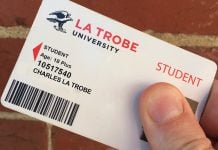Multiple choice, true or false, short answer and essay questions – chances are in your time at Uni you’ll come face-to-face with all of them during final assessments.
To help you get across exactly how to tackle each different type of question, we’ve put together a quick step-by-step guide.
Multiple choice questions
- Read instructions carefully and understand what they’re asking you to do.
- Work out how long to spend on each multiple choice question and try to stick to the time limit you decide for each.
- Underline/highlight key words or phrases in the question. This will allow you to better understand exactly what’s being asked of you.
- Read all of the options before answering. Options in multiple choice questions are often designed to make the choice difficult, so make sure to read all of the options before answering.
- Take special note of the question’s wording. Keep in mind absolutes, like “always” and “guaranteed,” as well as negatives, like “never” or “not” as these can sometimes allow you to eliminate certain options.
- Take note of subjective terms such as “choose the best answer”, and negative terms, such as “choose the statement that is not correct.”
- Use a process of elimination. If you have difficulty determining the correct answer, try eliminating the options you know are incorrect and focusing on what remains.
- Don’t get stuck – come back to it later. If you still can’t answer the question, don’t waste time going around in circles, skip it and come back to it later. You might remember the answer in the meantime!
True or false questions
- Approach each statement as if it were true. For a sentence to be true, every part must be “true.”
- Pay attention for “qualifiers”. Look out for words like “sometimes, seldom, few, always, every, often, frequently, never, generally, or ordinarily.”
- Don’t let “negatives” confuse you. Negatives, such as “no, not, cannot”, can be confusing within the context of a true/false sentence or statement. If a true/false sentence contains a negative, drop the negative word and then read what remains.
Short answer questions
- Know how much time you have to answer the question. Figure out how long you can spend on each and stick to it.
- Read the question carefully to understand it fully. Short answer questions often ask you to provide a definition for one of the terms or concepts covered in your subject, or present a short argument in response to a question. Analyse the task and understand exactly what it’s asking you to do. Identify the direction or instruction words, as these help you determine what the examiner expects from your answer.
- Plan. Short answer questions usually require paragraph-length answers. It’s best to plan your response before writing it, thinking through your main argument and the evidence or examples you will use to back it up. You should structure your response the same way you would structure a body paragraph of an essay.
- Write your response following the structure of an essay. Write in full sentences using appropriate academic language conventions (avoid contractions, colloquialisms, informal language, first-person pronouns, and so on). Take care to use technical and subject-specific terms correctly. Write in clear, full paragraphs. Remember, it’s the quality of your response, not the length of your response, which will get you the marks!
- Read over your answer afterwards to check for mistakes, as well as the clarity of your writing, spelling and punctuation.
Essay questions
- Analyse the task. First, identify the direction or instruction words, as these help you determine what the examiner expects from your answer. Select the essay topic’s direction word.
- Read. Read the question carefully to understand it fully. If you have a choice of essay topic, reflect on each option to decide which you feel most comfortable answering.
- Identify topic words and underline/highlight them– that is, what the essay question or statement is about.
- Use your time effectively. Figure out how much time you have to complete your response. This will influence the length of your essay, as well as how much you cover. For example, if the essay was worth 75% of the exam’s grade, and the exam was of two hours’ duration, you would aim to spend about 1 hour and 30 minutes on the essay.
- Brainstorm. Think back to the material covered in your lectures, tutorials and readings, then brainstorm responses to the essay topic for a few minutes. Once you have some ideas down, choose which ones to focus on in your essay. They should be highly relevant to the essay topic and you should be able to support them with appropriate evidence or examples. Also determine the position or argument that will form the basis of your essay.
- Write an essay plan. The most important feature of a high quality essay answer is a logical argument supported by high quality evidence. Therefore, you need to spend a few minutes planning your response. Jot down your overall argument and several (usually 3-4) key points. Note what supporting evidence or examples you will use to support each of your points.
- Structure. Outline your essay structure before you begin writing. An essay in an exam follows the same structure as an essay assignment. Work from the standard essay structure – introduction, body paragraphs, conclusion – outlining what you will discuss in each paragraph.
- Write. Now, with plan to work from and a clear position to argue, start writing! As with any academic essay, you are expected to write in full sentences using appropriate academic language conventions (avoid contractions, slang, informal language, and so on). Use technical and subject-specific terms to demonstrate your knowledge and understanding. Body paragraphs should begin with a clear topic sentence, contain evidence and examples to support this statement, and be linked back to the overall argument of the essay.
- Proof your work. Save a few minutes at the end of your exam to read over the essay and check for mistakes.
Good luck!














